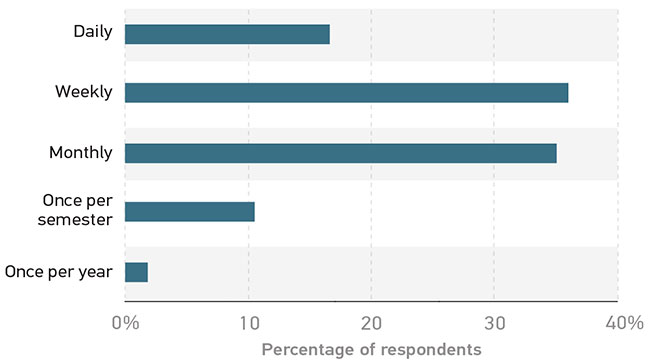How Often Do We Meet? Be Flexible
Once you establish a relationship, how often should you meet (figure 6)? This should be negotiated between mentors and protégés at the onset of a mentoring relationship to ensure consistent structuring of time and the ability to slot meetings into a regular workflow.1 For example, the ID2ID peer mentoring program for instructional designers—a partnership between the EDUCAUSE Learning Initiative (ELI) and Penn State—encourages the mentoring pair to establish the frequency that works best to accomplish established, agreed-upon goals. For ID2ID participants, the more frequent the meetings, generally the more successful they were in reaching agreed-upon goals.2 However, it's important to note that although frequency is important, setting clear goals and deadlines to achieve the goals is also key to success.

Mentors most often engaged with their protégés about once a week (41%), followed by about once a month (33%), about once a day (19%), and about once a semester (7%). Protégés most often engaged about once a month with their mentor (39%), followed by about once a week (26%). Twenty percent of women protégés met with their mentors on a weekly basis; for male protégés, that number is 30%. More Baby Boomers (17%) engaged with their mentors about once a day, compared with Gen Xers (10%) or Millennials (9%). Mentors who engage with women employees may consider offering more frequent meeting times, as women may need additional support or guidance as they navigate careers in a field where they are underrepresented. And for mentees, we suggest it's okay to negotiate the time you need to make the most of your relationship with your mentor.
Notes
-
Steve Cooper, "3 Tips for a Great Mentor Relationship," Forbes, March 20, 2012.
↩︎ -
Based on informal participant feedback.
↩︎